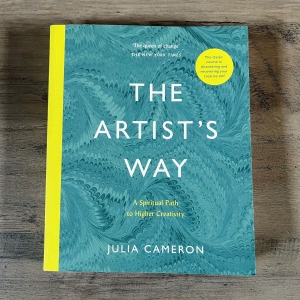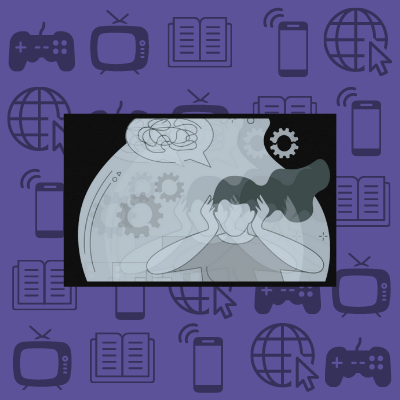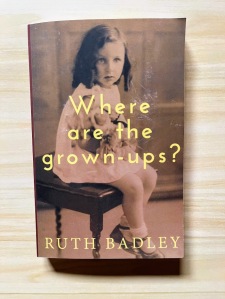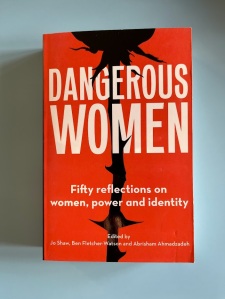
Recently, I posted a review on my first three weeks working on The Artist’s Way by Julia Cameron, a self-help book aimed at teaching its readers to embrace their creativity. Week 4, which I’m discussing here, proved to be challenging enough that I felt it needed its own post. Because it contains an exercise that many find difficult (something Cameron also acknowledges), I want to emphasize that there’s always something valuable to learn in such cases—but patience and perseverance are attributes you might want on hand as well.
Allow me to explain.
Getting to Know Me
The snowflake pattern of your soul is emerging.
Julia Cameron
Week 4 focuses on reflection, specifically considering how previous lessons help us become our more authentic selves. While it runs a tad long, this discussion notes how these changes may manifest and affect us before reminding us to use our affirmations to deal with these feelings as we work through our various artistic blocks. The two main exercises focus on learning more about that authentic self and its preferences. “Buried Dreams” explores past interests to provide some activities to try during the second exercise. While the connection between tasks was clear, restating how they relate to the chapter’s theme would be a useful addition.
The second and more challenging exercise is called reading deprivation (now renamed media deprivation). For one week, participants must not read, watch television, or go online—similar to digital or social media detoxes. In The Artist’s Way, Cameron argues that reading and other media distract artists from self-examination. Removing such distractions let us (1) get in touch with our feelings and thoughts (introspection); (2) connect with our inner voice (inspiration); and (3) refill the artist’s well by experiencing the sensory world. With our time freed up, Cameron first predicts we’ll become productive but eventually will shift to playing once we run of busywork. Play is important, because it lets creative grow (eg, the artist’s date). With this tool improving our understanding of ourselves, our creativity should increase as blocks dissipate.

Understanding the Challenges
Problems with Persuasion
This lesson unfortunately includes some elements I found counterproductive to getting onboard with media deprivation. As observed in my previous review, Cameron occasionally hints at a topic before she talks about it. Week 4’s introductory page contains one of these spoilers, as it urges readers to use the “reading deprivation” tool. Inserting this brief admonition before the lesson, detrimentally shifted my focus onto this alarming development. If preparing readers for this concept is a must, it’d be better to mention that we’ll later encounter a tool that assesses media’s impact on creativity where reading blocks are first mentioned in conjunction with filling the artist’s well (“Basic Tools,” p. 23 in the 2020 edition).
But the commentary itself also creates some barriers to reader buy-in. It’s difficult to summon enthusiasm for using this tool when the essay first characterizes words—my artistic medium—as a cross between tranquilizers and junk food. Some claims made here also seemed questionable (eg, that artists are “addicted” to reading[*]). Beyond the rhetoric lies the real problem: people eschew the hard work of examining their feelings and thoughts, using media as a shield. Starting with this point and connecting it to reflecting on our authentic selves could avoid creating more resistance to an already challenging exercise.
Creative Concerns
Turning to those challenges, there’s the matter of motivation. Usually, people who limit their media consumption (as I generally do) voluntarily do so, placing Cameron in the unenviable position of warding off her students’ displeasure[†] while encouraging them to undertake an unwanted challenge. Others understandably worry about how they’ll manage their obligations with such restrictions. These are the prime reasons some find this assignment frustrating. I also identified some other potential obstacles. The introspective among us might not need more time for self-scrutiny. Others who find media inspiring may find it puzzling/upsetting to be deprived of that inspiration. With these latter points, clearly stated goals[‡] might diffuse some resistance here, as these persons could focus instead on other goals such as exploring alternate sources of inspiration.
Getting Some (Online) Guidance
Cameron does respond to the more obvious concerns involving reading deprivation in The Artist’s Way but provides minimal instruction. Being told to procrastinate when it came to work or school struck me as unhelpful, as that’s not always possible. Because I previously found an online resource for this book, I consulted it and discovered that Cameron had been calling this tool media deprivation since at least 2012, which made me wonder why my book from 2020 didn’t reflect this. Regardless, Cameron’s website does advise her students to limit their inflow of media as much as possible without being irresponsible or getting fired. Her online description of media deprivation as a form of “conscious unplugging” also appealed to me more, convincing me that checking my media consumption couldn’t hurt.
It is a paradox that by emptying our lives of distractions we are actually filling the [artist’s] well.
Julia Cameron
Mixed Results
Less Internet, More Doing
With my plans in place and the household informed, I grumpily undertook the requisite week of media deprivation. I quickly discovered my mobile phone was a problem. For a device I spend half my life trying to find when I need it, it felt uncomfortably handy when I didn’t want it. While I couldn’t switch it off,[§] I could relocate it to a nearby room (something I plan to continue doing). With my phone out of reach and apps keeping me focused, my time on my computer was more productive. I also zipped through my to-do list efficiently and finished some projects lingering in my backlog.
Bookless and Bored
Not all my results were rosy. For example, I felt left out when my spouse and child watched television while I tidied up again (apparently, that supply IS inexhaustible). While I hardly missed games and television, losing some family time due to an undesired obligation was difficult. I also missed my reading time. Putting aside a great book (Lulu Allison’s The Salt Lick) was tough but receiving THREE more books in the mail that I also wanted to read (including Sarah Tinsley’s just released debut novel, The Shadows We Cast) felt unfair. The occasional boredom here wasn’t great, nor was having the time to dwell on it helpful. But I have to say, heading to bed instead of fuming was a good solution.




An Unexpected Twist
Ultimately, the promised boost in creativity never occurred, because my grudging efforts ended with deprivation. I could not summon any enthusiasm for hobbies, new or old. Afterwards, I struggled with understanding why I’d been so angry, given that I’ve chosen on numerous occasions to put aside books and other media for weeks with far less difficulty. The Artist’s Way, as it may surprise you, did help here.
In week 3, Cameron explains that we should pay attention to our anger, because it tells us something. My subsequent interrogation here was illuminating. I realized that this assignment unwittingly resurfaced memories of being too exhausted to read while caring for my then newborn, which was a painful instance where I briefly lost “me” in motherhood. This contributed to my resistance, as lacking sufficient reason to set aside books kept me unmotivated. Exploring the source of this reaction or looking for some way to make this exercise meaningful to me might have produced different results. Putting in a more since effort with the other activities, too, may have helped.
Conclusion
One of bigger takeaways of this week is that The Artist’s Way might benefit from an update that modernizes it in general and specifically brings it in line with Cameron’s current thinking. I found the more recent descriptions of media deprivation more appealing as they avoided hyperbole and provide more guidance. As for me, media deprivation proved to be more of trade off than a trade up, but I still learned things about myself (eg, buy-in is critical for me). Knowing what I do now, I’m seriously considering giving this another try, as I’d like to see whether I finally reap those rewards.
TLDR: Trying new things is hard, especially with a bad attitude. Staying positive and finding purpose in doing things differently might help.
Further Reading
For a more positive take on media deprivation, read Ben Kassoy’s article here. While I disagree that Cameron’s goal involves understanding our media consumption (it’s always bolstering creativity), he makes some great points on why media deprivation/detoxes aids mental health and makes us more mindful about our time online.
NOTES:
[*] I suspect that Cameron means reading blocks instead of a reading-based behavioral addiction, which apparently is a compulsion to read that negatively impacts on one’s life and mental health.
[†] Understandably, no one enjoys bad news (or tough love, as the case may be here), but some of what Cameron endures seems uncalled for.
[‡] The Artist’s Way might’ve benefited here by using tactics seen in traditional textbooks (eg, enumerating goals with bullet points, objective statements) so that main points are easy to locate and understand.
[§] It’s a must for someone with a school-aged child who seems to be an injury magnet this year.


One thought on “Reviewing The Artist’s Way: A Challenging Week 4”